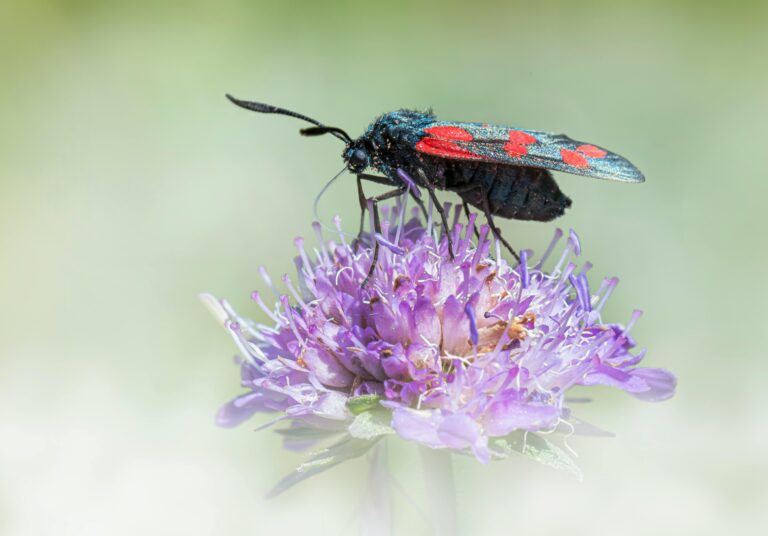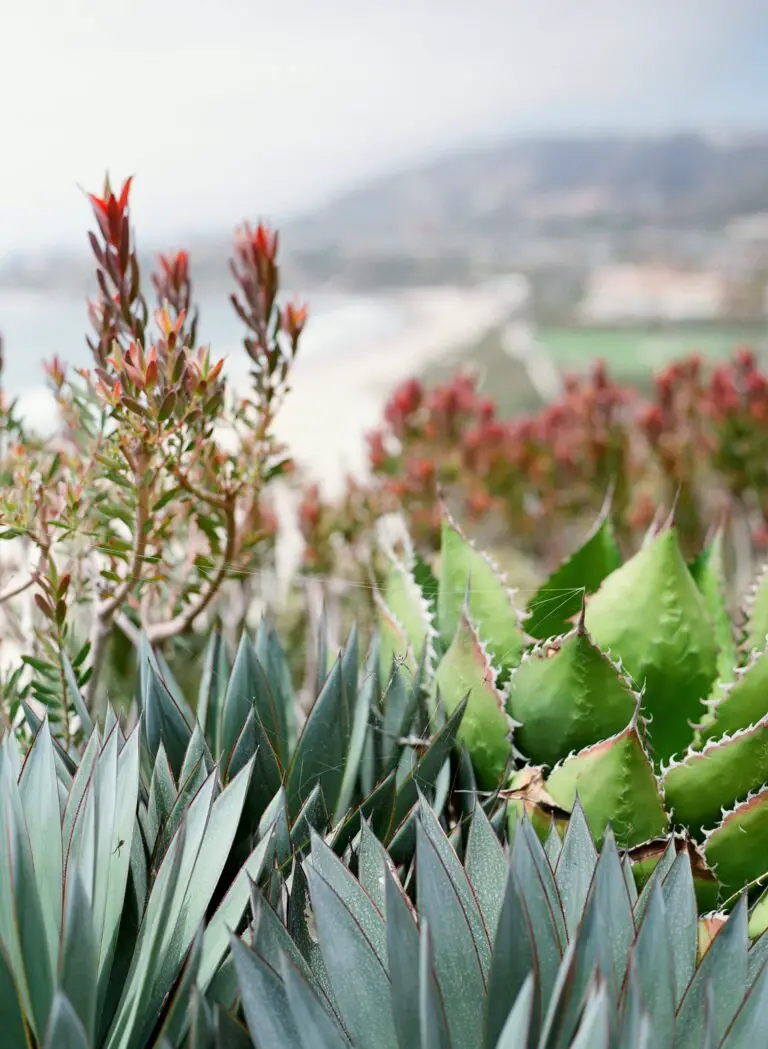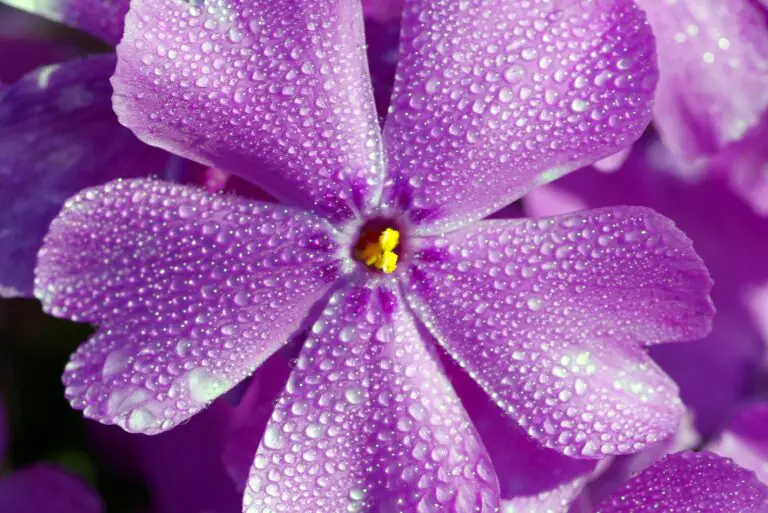Introduction to Sedum and Its Blooming Habits
Welcome to the delightful world of Sedum, a diverse genus with a quilt-like variety of species, each brandishing their unique flowering patterns. If you’ve ever found yourself in the gardening aisle, pondering over these succulents, you’d know that their blossoming habits are as multifaceted as their foliage. But, dear gardener, the question that might bedazzle you is: “Should I let sedum flower?” Let’s unearth the layers behind this blooming question.
Picture this: The sun is beaming down on a warm summer’s day, and you notice clusters of starry Sedum flowers transforming your garden into an artist’s palette awash with colors. Sedum, commonly known as ‘Stonecrop,’ is no one-trick pony; it can be a low-growing groundcover or a tall, stately plant waving in the breeze. While some species modestly present their blooms almost shyly, others burst forth with a flamboyance that’s impossible to ignore.
Their kaleidoscope of blooms ranges from the palest pinks to the deepest crimsons, set against fleshy green leaves that, on their own, would lure any plant lover’s gaze. It’s not just about aesthetics, though. For our pollinator friends, these flowers are like bustling airports offering the nectar and pollen express. Permitting your sedum to flower could mean throwing a block party for bees, butterflies, and other beneficial guests.
Now, savvy gardeners know that not all sedum should be left to their own devices. Understanding the body language of your particular sedum species is key to unlocking their potential. Some might prefer a trim to keep them shipshape, while others flourish when left alone. It’s this dance between gardener and plant that creates a garden both beautiful and harmonious. Investigate garden tips for Sedum species to make an educated decision for your green companions and ensure they put on their best show when the curtains rise.
Let’s get a closer look at these botanical marvels in action. Here’s a snippet from gardening experts who shine a light on the high-definition flowering spectacle that is the sedum:
As the video illustrates, sedum’s charm is undeniable. The real question isn’t just whether you should let sedum flower, but how you can support these resilient beauties in showcasing their full blooming glory. So, before you make a beeline for your pruning shears, pause and ponder the perks sedum flowers offer to your garden’s ecosystem and aesthetic. To snip or not to snip? That is a query answered best with a touch of knowledge and a sprinkling of personal preference.
The Blooming Dilemma: To Let Sedum Flower or Not
As gardeners, we’re faced with decisions that will shape the very essence of our green havens, and one such pivotal choice is whether to let our sedum plants burst into their full blooming glory. This decision isn’t just about aesthetics; it’s a complex weighing of benefits and potential drawbacks. Picture the lush sedum, on the cusp of unfurling its blooms—a gardener’s fork in the road, where the path taken can lead to a riot of color or a calculated sacrifice for plant vigor.
Sedum plants—those stoic succulents gracing gardens with their fleshy leaves—are renowned for their hardy nature and drought resistance. Growing sedums demands minimal care, making them a favorite among gardening novices and those who burnish a “less-is-more” philosophy. But when flower buds begin to form, it’s tempting to dream of the potential beauty. After all, what’s more rewarding than observing the metamorphosis from modest greenery to the explosion of colors that can be expected from these often overlooked succulents?
Yet, blooming is not without its trade-offs. Allowing a sedum to flower can redirect energy away from the foliage, possibly resulting in lanky stems and a less robust overall appearance. Some argue for pinching off buds to maintain a compact, vibrant plant that focuses its resources on verdant growth rather than ephemeral flowers. Others advocate for nature to run its course, embracing the seasonal rhythm that culminates in a spectacular floral display.
To bloom or not to bloom—that is the question that can divide sedum enthusiasts. But take, for instance, the gardener who yearns for the sedum’s star-shaped blossoms to adorn their autumn beds. They might embrace the flower, accepting the botanical spectacle and the visiting pollinators it invites. Conversely, think of the garden designer aiming for the architectural foliage of ‘Autumn Joy’, who prunes with precision to bolster a particular silhouette.
One cannot deny the visual impact of a sedum in full flower. 
In the crossroads of this blooming dilemma, we each must assess our motives, resources, and intentions. If you find yourself pondering your garden’s future and the role sedum should play, you may wish to explore successful succulent care practices as a compass for your decision-making. Above all, gardening is a personal journey—one that flourishes with every choice, whether it results in flowers or a foundation of perennial strength.
The Blooming Dilemma: To Let Sedum Flower or Not
Every gardener knows the internal debate that comes with the start of sedum’s bloom season. To snip or not to snip? The vibrant, starry flowers beckon with their allure, promising to crown your garden with a kaleidoscope of color. Yet, gardeners understand that beauty can sometimes come at a cost. Let’s unravel this floral conundrum together.
It’s an enticing sight—sedum plants on the brink of opening up their treasure trove of flowers. It’s a moment of anticipation, akin to an artist adding the final strokes to a masterpiece. Caring for your sedum and deciding on its bloom can feel much like shaping an evolving piece of living art. But what are we sacrificing for this bloom?
Allowing sedum to flower can be likened to letting a vigorous runner sprint a marathon; it’s a showcase of stamina but depletes energy stores that could have been conserved. Post-bloom, sedum may appear tired, its once taut leaves drooping, fatigued from the flamboyance of flowering. There’s a trade-off, as energy directed towards flowering could have otherwise fueled lush, green growth.
On the other hand, a sedum in full bloom is a sight to behold. Visualize a floriferous sedum ‘Autumn Joy’ drawing in butterflies—a real-life canvas pulsating with animated beauty. Such natural splendor can reignite a gardener’s passion, a testament to the cycle of life unfurling within their cultivated earth.
Yet some practical gardeners choose the path of pruning for the greater good of plant health and appearance. They might recount tales of sedum, left unchecked, that evolved into unwieldy spectacles, their weakened stems sprawling untidily across the garden bed in a post-bloom slump.
In the heart of this dilemma lies the philosophy of gardening. Do we let nature’s impartial hand govern the ebb and flow of life or do we, as stewards of our microcosms, make the tough choices for the wellbeing of our green companions?
Every gardener has a unique story to share when it comes to these decisions—tales woven into the very fabric of their gardens. Perhaps you’ll recall a neighbor whose sedum, allowed to flower year after year, somehow managed to tell the tale of resilience. Or maybe there’s wisdom to be gained from an experienced gardener, whose carefully curated succulents never see a bloom, yet impress with their vigor and vitality. For those seeking deeper insights, there’s a wealth of knowledge on succulent care to guide you along this path.
Consider this image: 


Benefits of Letting Sedum Bloom
Are you on the fence about whether or not to let your sedum bask in its full blooming glory? Well, pull up a garden stool, and let’s chat about why you might want to invite those blossoms with open arms. Allowing sedum to flower isn’t just about sitting back and enjoying the show—it’s a clever move that rewards both you and your garden in a bouquet of benefits.
First things first, pollinators. These little critters are the VIP guests at any garden party, and sedum flowers are like irresistible canapés. The buzz around town is true—bees, butterflies, and other beneficial insects flock to sedum’s star-shaped flowers, creating a hub of activity that’s vital for a healthy ecosystem. It’s like a happy hour for pollinators, and your garden is the trendy spot.
Then, there’s the undeniable visual appeal. Sedum transforms from a demure groundcover or a sculptural succulent into a frothy display of colors. Picture drifts of pink, red, yellow, or white flower clusters standing tall above fleshy foliage. It adds a new layer of texture and color, contrasting nicely with other plants in the beds. Let’s be honest, a flowering sedum is nature’s eye candy, turning your garden into an outdoor gallery of living art.
What about the plant’s well-being? Well, the flowering stage is an integral part of the sedum’s life cycle. By letting sedum flower, you are allowing the plant to complete its natural rhythm, which can encourage healthy growth in future seasons. It’s like running a marathon for them—they’ve worked hard to get there, so let them cross that finish line!
While discussing the garden’s vibrancy, it’s essential to highlight the role of flowering sedums in a succulent’s lifecycle. From propagation to maturity, every phase is a testament to nature’s brilliance, with blooming as one of its crowning moments.
In a nutshell, letting your sedum flower is a win-win for everyone—well, maybe except for the weeds, because those blooms are stealing the spotlight. It’s time to let those sedums strut their stuff and show off their floral finesse. Trust me, your garden’s thank-you note, in the form of buzzing bees and beautiful views, is in the mail.
Potential Drawbacks of Sedum Flowers
If you’re considering whether to let your sedum plants bloom, it’s important to weigh in on some potential concerns. While sedum flowers can be a delightful addition to your garden, they aren’t without their drawbacks. So, let’s roll up our sleeves and get to the nitty-gritty of what could go awry with those sedum blooms you’ve been eyeing.
First up, and perhaps the most striking issue, is overgrowth. You see, some sedum species are enthusiastic to the point of being invasive. They can spread faster than a gossip in a small town, crowding out their less assertive neighbors. Imagine this: one day, you’re admiring a neatly arranged garden bed, the next, it’s a sedum jungle out there. And not the cool, ‘I’m-on-an-adventure’ kind of jungle, but the ‘oh-no-where-did-all-my-other-plants-go’ kind.
Then there’s the problem of self-seeding. Sedum has a knack for scattering its seeds like confetti at a parade. This might sound like a free plant bonanza, but it’s more of a double-edged sword. Before you know it, you could find sedum seedlings popping up in the most unexpected places — between patio slabs, in the cracks of a wall, or even in other pots! It’s like having an army of tiny plant spies on a mission to take over every crevice of your garden.
Another hiccup with letting sedum flower is the potential reduction in foliage quality. Some sedum varieties, particularly when allowed to flower, can get a bit leggy and lose that lush, full look that makes them so attractive. Imagine having a plant that looks more like a scrawny chicken trying to don a feather boa, rather than the vibrant, robust character you fell for in the nursery. Not exactly the aesthetic you were aiming for, right?
But don’t just take my word for it, let’s hear from the gardeners who’ve been there and done that. Here’s a video that delves into the pros and cons of letting your sedum flower, giving you an even clearer picture of what to expect.
So, there you have it — the lowdown on the potential drawbacks of letting your sedum strut its stuff in the floral department. It might be tempting to let those blooms run wild, but a little foresight can save you from a garden dominated by these enthusiastic beauties.
Sedum Maintenance: Pruning and Care
Do you ever gaze at your sedum plants and wonder, “To snip or not to snip?” Well, you’re not alone! Pruning your sedum might feel like you’re giving your green buddy a haircut, but it’s a tad more complex than a quick snip-snap. It’s all about timing and technique to coax those sedum beauties into a floral show or keep them compact and robust.
Let’s dig into the nitty-gritty of sedum grooming. Imagine the plant in front of you; those succulent leaves are enjoying the sun’s embrace, but the stems are stretching taller each day. Do you let them tower towards the sky, potentially unfolding into a spectacular bloom? Or, do you take your gardening shears and, come late spring or early summer, give them a thoughtful trim to encourage a fuller, albeit shorter, demeanor?
If you’re on team “Let It Bloom,” you’ll witness a cornucopia of flowers – a buffet for bees and butterflies! However, if you’re eyeing a more manicured garden aesthetic, a technique known as “pinching back” might be your best friend. This simply involves snipping the growing tips of your sedum in early summer. By doing so, you not only invite a bushier growth but might also head off any unwieldy floppiness when those sedum heads get heavy with flowers.
And here’s a pro tip: When deadheading, remove the spent blooms to send the plant a memo to stop channeling its energy into seed production. This allows your verdant pal to focus on root and foliage fortitude, keeping the garden performance strong all season long.
In the realm of overall sedum care, here’s a guide to keep your Sedum thriving, even if you decide the shears should stay in the shed. Water wisely – sedums aren’t fond of soggy feet. Place them in a spot where they can bask in ample sunlight – think of it as their personal spa retreat! And, embrace the occasional uptake of weeds to ensure your succulents stay the star of the show.
Curious how those sedum-snipping techniques look in action? Check out this enlightening video:
Remember, the secret to sedum success is a little bit of attention now and then. With the right snips and care, you can enjoy a lush, vibrant garden that’s both a visual delight and an inviting haven for pollinators. Happy pruning!
Sedum Maintenance: Pruning and Care
Hey green thumbs and budding gardeners! Are you eyeballing your sedum and pondering whether to let it burst into bloom or to keep it nice and neat? Pruning isn’t just about chopping and dropping; it’s an art, especially when it comes to these plump-leaved beauties. Whether you’re encouraging a floral fiesta or aiming for a more reserved green space, your technique matters. But fear not, we’ve got some practical advice to keep your sedum singing in harmony with your garden’s chorus.
Now, imagine giving your sedum plant a pep talk, coaxing it to either show off its flowers or flaunt its foliage. Late spring rolls around, and your secateurs are itching for action. If you choose to let your sedums rise to their full height, be ready for a pollinator party. But, if you’re looking to avoid the spectacle of tall, floppy stems come late summer, it’s time to pinch back. By snipping the growing tips early on, you reign in the giants and foster a more compact, yet lush, mound of green.
For those with a bloom-or-bust attitude, letting those starry sedum flowers shine is a game-changer for local critters, from bees to butterflies. Still, if a sculpted garden sphere is your endgame, deadheading, or removing old blooms, tells your plant to double down on vigor, rather than wasting energy making seeds.
Moving beyond the snip and clip, proper sedum care is also about embracing the basics. A little bit of sun, a smidge of water, and the occasional weed-pulling session go a long way. If you need some pointers for keeping your sedum and other garden pals in tip-top shape, take a gander at this post packed with timely tips for gardeners.
Still scratching your head about how to handle those pruning shears? No worries! Check out this video that spills the beans on sedum pruning secrets:
Pruning your sedum isn’t just a chore – it’s your chance to choreograph a living sculpture. Whether you let it flower or fashion it to fit your floral vision, just remember, every snip shapes not just your plant but the health and happiness of your garden. Go on, get those shears dancing! 🌿✂️
Incorporating Sedum into Your Landscape Design
When it comes to enhancing your garden’s aesthetic, the allure of sedum plants is hard to overlook. But the burning question remains: should I let sedum flower? Let’s dig into the blooming potential of sedum and how it can elevate the charm of your green space.
Imagine a tapestry of sedum flowers adding a splash of color to your rock garden or lining the edges of your pathway with their star-shaped blooms. Allowing sedum to flower can bring an element of surprise to your landscape, aligning with the seasonal shifts that mother nature orchestrates. Picture the vivid hues of sedum blooms complementing the warm tones of autumn or echoing the exuberance of summer in your backyard.


Incorporating sedum into your landscape isn’t just about letting them bloom; it’s about strategizing their colors and timing. A well-planned sedum spectacle can create visual harmony throughout the year. Consider how the pinks, purples, and yellows of sedum flowers can interact with perennial blooms or annuals in your garden. It’s not just about aesthetics either; the flowering sedum can be a haven for pollinators, thus supporting local biodiversity.
From a practical standpoint, sedum is a gardener’s dream. These resilient succulents thrive with minimal fuss, requiring little water and tolerating poor soil conditions. By allowing them to flower, you’re not just making a statement; you’re embracing a plant that represents endurance and adaptability—qualities we yearn for in our everyday lives.
Real-life examples abound, showing just how versatile flowering sedum can be. Take a stroll through a neighborhood where sedum elegantly borders driveways, turning a mundane feature into a whimsical experience. Or perhaps visit a local park where sedum varieties form a low-maintenance, drought-tolerant groundcover that conserves water while adding to the visual interest of the landscape.
Indeed, questioning whether to let sedum flower opens up a world of creative possibilities. It’s more than just gardening; it’s crafting living art that evolves with the seasons and inspires joy and serenity in those who behold it.
Knowing Your Sedum Species
Imagine you’re wandering through a vibrant garden, a tapestry of greens, yellows, and pinks unfurling under the sun. Among them, a particular group of succulents catches your eye—the sedums. Each one, an invitation to a world of low maintenance yet stunning variety. But do you know which of these are about to burst into a spectrum of blooms? Let’s get to know the sedum species a bit better!
Sedums, or stonecrops, encompass an array of species that range from ground-hugging marvels to upright garden sentinels. They are resilient, drought-tolerant, and a charm in any garden. Especially during late summer and autumn, some sedum types, like Sedum spectabile and Sedum telephium, proudly display their star-shaped flowers in clusters, enchanting pollinators and gardeners alike. But it’s not just about aesthetics; knowing if you’re nurturing Sedum acre, which tends to flourish without a flashy show, or the towering Sedum ‘Autumn Joy’ with its celebrated flower heads, is key to caring for them properly.
It’s like meeting someone new; you don’t just glance at their hair or attire—you learn their name, their quirks, their needs. Likewise, recognizing your sedum’s characteristics—such as its leaf shape, growth habit, and color—is crucial. Leaf color, for instance, can range from the frosty blue hue of Sedum ‘Blue Spruce’ to the fiery red tips of Sedum ‘Dragon’s Blood’. And while some varieties relish full, baking sun others, prefer the dappled shade. Getting up-close and personal with your plant’s preferences ensures it thrives and, if desired, flowers to its fullest potential.
So, should you let your sedum flower? Perhaps you’re eyeing your ‘Purple Emperor’ as its richly colored foliage promises a royal bloom. Before deciding, understand that each species has its rhythms, and embracing this natural ebb and flow leads to a healthier, more spectacular garden canvas.



Next time you spot the plush carpet of Sedum album ‘Coral Carpet’, stop to appreciate the subtle blush of its tiny flowers. Or when the bold Sedum rupestre ‘Angelina’ presents its yellow stars, don’t rush to trim; they’re a joyous burst of life after all. Care for your sedum as you would a treasured friend, and in return, it will grace your garden with vitality and perhaps, a flower show that’s worth the wait.
Knowing Your Sedum Species
Dive into the captivating world of sedums and you’ll discover a plant family that’s as diverse as it is enchanting. Whether you’re a seasoned green thumb or a budding garden enthusiast, understanding which sedum species are most likely to grace your garden with flowers is both a joy and a journey. These succulent beauties come in various shapes and sizes, each with its own unique charm and blooming potential.
Among the sedum family, you may come across the vibrant Sedum spectabile, known for its robust, upright form and spectacular autumn blooms that attract a symphony of pollinators. Or perhaps you’ll encounter the low-growing Sedum reflexum, offering a carpet of foliage that only hints at the floral wonders it can produce under the right conditions. Identifying which sedum you’re hosting can be as simple as observing the arrangement of their fleshy leaves, the texture of their stems, or the hint of buds waiting to burst open.
Yet, caring for these hardy perennials requires more than just recognition—it demands a nurturing touch. Take the steely Sedum ‘Blue Spruce’, its blue-green needles basking in the full sun and poor soil conditions that others may shy away from. Or consider the blush-pink flowers of Sedum spurium that beckon you closer with their delicate charm. Your approach to each variety should be tailored to its particular love for sunlight, watering habits, and temperament when it comes to the change of seasons.
Understanding the inclinations of your sedum can dramatically influence whether you let it flower. Do you revel in the lush foliage of the svelte Sedum ‘Matrona’ or eagerly anticipate its pink flower heads? Knowing your sedum’s growth patterns and flowering cycle can be a garden game-changer. Providing the right care and conditions can encourage a bashful bloomer like Sedum ‘Cape Blanco’ to share its shy blossoms with an audience of admirers.



Embrace the distinct personalities of your sedum species—whether it’s the glorious Sedum ‘Autumn Joy’ with its crowning glory of rich, rosy blooms, or the diminutive Sedum dasyphyllum ‘Major’, content to spread its tiny leaves like a soft, green quilt across your garden bed. Consider the unique spectacle each can offer. As they unfold their seasonal surprises, you’ll be reminded that sometimes, the question isn’t should you let your sedum flower, but rather, how can you help them flourish in their own exceptional way.
Frequently Asked Questions
Whether you’re a seasoned gardener or someone who’s just fostered a passion for succulents, you may find yourself pondering, “Should I let my sedum flower?” Let’s get down to the root of this! Understanding the lifecycle of sedum plants and the timing of their blooms can be crucial for ensuring their vivacity and longevity. So, let’s nip those doubts in the bud with some commonly asked questions.
When is the best time to let sedum flower?
Imagine you’re throwing a party – you wouldn’t want to do it at a time when all your guests are busy. Similarly, timing is everything when it comes to sedum blooms. Take cues from nature! The best time to let your sedum flower is typically in late summer to early fall. This period aligns with the natural flowering schedule of these plants. Blooms appear like nature’s fireworks, painting your garden with brush strokes of radiance and attracting pollinators preparing for the cooler months ahead. By allowing your sedum to flower during this prime time, you’re essentially giving it a thumbs-up to participate in the seasonal gala with full gusto.
How does flowering impact the lifecycle of sedum plants?
Envision a runner on a track – post-race, they need to cool down and rejuvenate. Flowering is a bit like a marathon for sedum plants; it’s a significant investment of their resources. When you let your sedum plants bloom, they get to complete their lifecycle, contributing seeds for future generations. However, it’s a double-edged sword. Post-flowering, they need some TLC. They might show signs of fatigue – think wilted leaves or less vigorous growth. But fear not! With your attentive care, such as prudent watering and occasional fertilization, these green champions will spring back, ready to face the next season with replenished energy.





